Point of support. What is more useful for the fleet: one nuclear cruiser or three frigates?
In 2022, Mr. Peter the Great will "knock" on 24 of the year, and it is obvious that he should take the place of Admiral Nakhimov - if we want, of course, that this ship continues to guard the maritime borders of the Fatherland. But in this case, the modernization of "Admiral Lazarev" can not begin before the end of the 20-s of this century (an important qualification in the realities of our shipbuilding industry). But is it worth while to take on a ship whose age is close to 45 years?
Thus, the pessimists have already written off the Admiral Lazarev, but the optimists, as always, hoped for the best. To the author’s deep regret, it seems that pessimists turned out to be right this time - they passed recently news that our oldest TARKRs, Admiral Ushakov and Admiral Lazarev, will still be utilized, and even the amounts provided for their liquidation are named.
Despite the fact that the author of this article in that dispute belonged to the inveterate pessimists, it hurts him to realize that the Admiral Lazarev will never return to the current fleet. Apparently, somewhere deep in the soul, there was still hope for a miracle, which, alas, did not happen. But ... maybe this is right?
Do we really need nuclear cruisers?
The news that the most powerful nuclear-powered cruiser will soon go on its last journey caused quite a heated discussion, during which such a point of view was expressed. The explanation is simple: for the money that could be spent on upgrading the TARKR project 1144, it would be possible to build several frigates or nuclear submarines, the benefits of which will be much greater than from the giant missile cruiser. Let's try to figure out whether this is so.
The first thing I would like to note is that, unfortunately, there is no exact data on the cost of upgrading the Admiral Nakhimov. In 2012, Mr. A. Shlemov, at that time - the head of the state defense order department estimated its value at 50 billion rubles, of which 30 billion rubles. should have spent on restoring the technical readiness of the cruiser, and 20 billion rubles. - on the purchase of new weapons. However, this figure, unfortunately, does not clarify, but rather only confuses the matter. For example, Izvestia, referring to this interview, reported that at that time the cost of the 22380 corvette was 10 billion rubles, and that of the 22350 frigate was 18 billion rubles. Hence, in a number of publications, it was concluded that the cost of upgrading TARKR would be about the price of approximately 5 new corvettes or 2,5 frigates. But where did such prices come from?
According to the open press, the cost of the head corvette of the 20380 “Steregushchy” project increased from the planned 6 billion rubles. (rounded) to 13 billion rubles, and in fact we are talking about a ship that did not receive the Redut air defense system. At the same time, the contract price (excluding VAT) of serial 20380 corvettes ordered for construction in 2014 was over 17 billion rubles. If we bring these prices in 2012 according to official inflation, then it turns out that the cost of the 20380 project corvette was over 15 billion rubles, that is, five corvettes for 50 billion rubles. it would be impossible to build.
But you need to understand that the figure voiced by A. Shlemov is of a preliminary nature, and that according to the results of the survey of the ship, the cost of repairing and upgrading it has obviously increased significantly. Thus, we come to what we started with - the exact cost of work on Admiral Nakhimov is, alas, incomprehensible.
Nevertheless, we are probably not mistaken too much by assuming that the cost of returning this nuclear cruiser to service will be equivalent to the cost of building three Adriral Gorshkov 22350 frigates. Here with them we will compare the upgraded cruiser.
What will "Admiral Nakhimov" get?
Unfortunately, not much more is known about the features of its modernization than about the cost. Absolutely reliably, perhaps, only that the place 20 PKR "Granit" will take 80 mines UKKS, intended for "Onyxes", "Caliber", and, obviously, "Zircons". It is also known (but this is slightly less reliable) that no C-400 will be put on TARKR, and the C-300F complexes present there will be modified to C-300FM. But what about the rest ...
In various publications it was repeatedly stated that the “Admiral Nakhimov” will receive the “Polyment-Redut” system, and this was extremely logical. The fact is that, in contrast to the “Peter the Great”, which has at least gradually becoming obsolete, but still formidable SAM “Dagger”, the “Admiral Nakhimov” was armed almost useless in the modern naval combat AMS “Osa-M”. Obviously, replacing them with more modern complexes is uncontested, and here “Poliment-Redut” would be the best fit - a relatively compact, but at the same time, the most modern Russian maritime SAM.
Nevertheless, the intrigue was preserved - solely due to the fact that the developers of Poliment-Redut could not manage to bring their offspring to standard, and if so, then why put an inoperative air defense missile system on board? However, relatively recently, the matter still went smoothly - the head frigate of the 22350 series, carrying this complex in a complete set (that is, not only the Redut air defense system, but also relying on it according to the Polimer radar project) fleet, and its land analogue, the air defense system "Vityaz", was able to still complete state tests.
Again, for reasons not related to the air defense system, the series of frigates of the 22350 project was strongly delayed in construction, which means that the production capacities will not be overloaded with orders for Polimet-Redut in the near future. Thus, it can be assumed that the production of this complex for “Admiral Nakhimov” will not cause any special problems. How many total missile launchers will be installed on TARKR is difficult to say, but given their compactness, we should expect at least a hundred mines. In the end, there was a place for 128 "Daggers" on "Peter the Great"?
But what will happen to the SARS-s is completely unclear. "Nakhimov" had 6 installations "Dirk", but they may well go for a replacement - yet the complex entered service with 30 years ago, in 1989. However, what exactly would it be changed for? The “budget” option is not excluded, in which the “Dirks” will be refined to “Kortik-M”, if it is technically possible at all, but this, frankly, will not be the best solution. According to the author of this article, the sailors did not speak very well of both the Kortik itself and its modification. Let's just say that there is an opinion that the complex works more or less decently only in “greenhouse” conditions, but in the sea, in combat services, something constantly goes wrong with it.
If so, then for Admiral Nakhimov there are 2 other options. It is possible that ZAK “Palash”, which are a purely artillery, missile-free complex, will be installed on TARKR, since initially, when it was created, the Palash was supposed to be mated with Polyment-Redoubt, so that they had to complement each other.
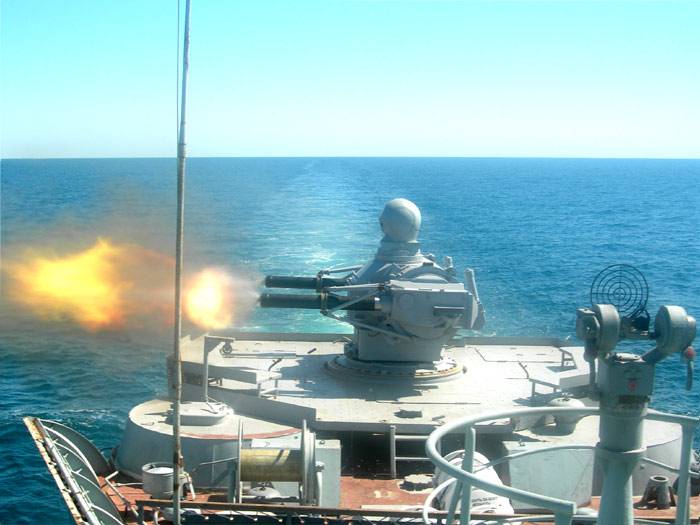
But it is possible that the cruiser will receive six installations "Pantsir-M". But the AK-130 two-gun installation is likely to remain in its original form, unless it adds a more modern SLA for it. However, this is normal - the artillery system is very powerful and quick-fire.
As for the torpedo weapons, again, one can only guess. Prior to modernization, Admiral Nakhimov had two five-tube 533-mm torpedo tubes PTA-53, which allowed using not only torpedoes of the appropriate caliber, but also the Waterplant PLUR, and the total ammunition of torpedoes and PLUR was 20 units. It is difficult to imagine that today, given the appearance of new and very advanced 533-mm torpedoes, someone will risk dismantling these vehicles, and why?
True, powerful torpedo armament was not accompanied by an equally powerful anti-torpedo arsenal, and this could be considered one of the flaws of the ship. In fact, as an anti-torpedo weapons it was possible to use only RBU-12000 bombers (one) and RBU-1000 (2 units), but false targets, simulators, if such could be taken instead of part of the ammunition load of 533-mm vehicles. Today at the disposal of the Russian Navy there is a very good “Package-NK” which, of course, “asks” for TARKR, because the latter, of course, is a tasty target for enemy submarines. But it would be extremely strange to replace 533-mm devices with the “Package-NK”, where it would be more logical to sacrifice bombers. And although it is more than likely that our anti-torpedo complex will surpass three RBUs with ammunition and equipment in their mass, such an overload will hardly be at least noticeable for a ship in almost 25 000 t displacement. The same applies to the place to place it.
Thus, we can more or less reasonably assume that the weapons of the modernized TARKR "Admiral Nakhimov" will be:
80 cells UKKS for missiles of the family "Caliber", "Onyx", or "Zircon";
92 cells Fort-M SAMS C-300FM;
100 or more cells of the Polymer-Redut air defense missile system;
6 ZAC "Palace";
1 * 2 130-mm AK-130 gun mount;
2 * 5 533-mm torpedo tubes, ammunition - 20 torpedoes and Waterplant "Waterfall";
2 * 4 or, possibly, 2 * 6 324-mm torpedo tubes Package-NK;
3 helicopter.
And now let's compare all this splendor with the armament of three frigates of the 22350 project.
Impact potential
Here the three "Gorshkovy" obviously loses, and - loses "with a bang." Each frigate has a total of 16 cells for missiles, just three of their frigates get 48. But the problem is not even in the fact that 80 cruise missiles from TARKR are noticeably larger than the 48 such missiles from frigates, but in the absence of 22350-mm torpedo tubes on ships of the 533 project.
In fact, all the standard anti-submarine armament of these ships (not counting helicopters) is only 2 * 4 324-mm “Package-NK”. This is a good anti-torpedo device, but for its anti-submarine it’s too “short arm” - the MTT anti-submarine torpedo has the maximum range of 20 km only when the speed drops to 30 knots. According to these parameters, a small torpedo will never, of course, be able to compete with "big" 533-mm "colleagues" - the same Mk.48 had a range of 38 km at speed in 55 nodes as far back as 80-s of the last century. In addition, the package-NK torpedoes are not universal; another M-15 is used to defeat enemy torpedoes. Thus, the anti-submarine potential of the Pack-NK is not only insufficient, it also reduces the anti-torpedo protection of our frigates, because MTT can only be taken to replace the M-15 part.
All this speaks of the need to place something more anti-submarine-long-range on frigates of the 22350 project, and there is such an opportunity: as you know, the Caliber family of cruise missiles incorporates PLUR 91Р / РТ. But, again, only due to the "spending" of the UCSS cells, since these PLUR can only be taken instead of other types of cruise missiles. And so it turns out that long-range anti-ship (or against ground targets) and anti-submarine weapons on the modernized TARKR "Admiral Nakhimov" are represented by ammunition in 100 units, including 80 missiles or PLUR in UBCS and 20 torpedoes or PLUR in 533-mm torpedo tubes , and the three "Gorshkovykh" for everything about everything - 48 cells of the UKKS.
In other words, in terms of its shock capabilities, the three of the 22350 frigates of the project are approximately twice as losing to the TARKR.
Air defense
Here, the lag of the three frigates of the 22350 project is, perhaps, even more fatal than in the case of the shock potential, although perhaps it is not so obvious at first glance. To begin with - let's try to understand the capabilities of the "Fort" and "Polyment-Redut" complexes.
According to the data available to the author, the situation with the “Fort” is as follows: initially the complex was a naval equivalent of C-300P, and was armed with 5В55РМ missiles, that is, a naval analogue of 5ВХNUMXР. In this version, the Fort was mounted on 55 missile cruisers and the first two atomic cruisers, the range of 1164B5РМ missiles reached 55 km. At the same time, it is very similar to the fact that such a range was not the limit for a rocket, but was limited to the means of its guidance. And later, when the capabilities of the MSA were “pulled up”, the range of the “Fort” air defense system with 75ВХNUMXРМ missiles on all of the above ships reached 5 km.
However, for the "Admiral Nakhimov" complex was upgraded - the launch air defense systems "learned" to take the 48H6 SAM, which has a firing range of up to 150 km. However, the creation of an adequate fire control system again fell behind, and TARKR received the same OMS as on other ships, that is, its firing range continued to be limited to 93 km. Apparently, it was in this condition that the modernization “caught” him.
But with the extreme cruiser of the series, "Peter the Great", everything is somehow unclear. The ship received an 2 air defense missile system, one of which is exactly the same "Fort", as well as those that were installed on the "Admiral Nakhimov", carrying 48 SAM 48Н6. The second “Fort-M” air defense missile system received even more “long arm”, 46 48Н6Е2 missiles with a target range of up to 200 km. But before the fire control, there are still ambiguities. The fact is that in the photographs of Peter the Great two different fire control stations are clearly visible, one of which is the classic ZR41 “Wave”
But the second is clearly its more advanced version.
Thus, it cannot be excluded that the maximum range in 150-200 km for the 48H6 and 48Н6Х2 SAMs can only be provided by one fire control station installed on the ship’s superstructure, and the stern has a range of no more than 93 km. On the other hand, it is quite possible that the stern is still refined to the possibility of using 48H6 missiles at their maximum range, that is, 150 km.
So if, according to the available data, the Admiral Nakhimov gets the X-NUMX air defense system Fort-M, they will be able to use the 2H92-48 XUR with a range of up to 6 km to 2.
And what about Polyment Redut? According to the official website of its manufacturer, the Almaz-Antey concern, to date, the ammunition of this air defense system includes three missiles. This is a short-range rocket 9М100, which is capable of hitting air targets at a distance of no more than 15 km, a medium-range rocket 9М96 (up to 120 km) and its improved version 9М96Д, which has an 150 km range. Thus, it seems that the Redut missiles are not too inferior in their capabilities to the Fort-M air defense system and at the same time they are much more compact. So, perhaps, it would be worthwhile to dismantle the Fort-M monstrous launchers and replace them with a large number of Polymer-Redut launchers? Moreover, it has long been announced about the development of a “long arm” for the newest air defense system - missiles with a range of up to 400 km, with the help of which the capabilities of Polyment-Redut should radically exceed the already outdated Fort-M air defense system.
Perhaps some of the esteemed readers may have a feeling that the author measures the effectiveness of the air defense system solely in terms of the range of its missiles, but this, of course, is completely wrong. The author is well aware that small, medium and long range SAMs have their own tasks and roles in providing air defense of a ship or unit. There is no point in trying to bring down the Harpoon anti-ship missiles that appeared over the horizon from 25 km using ZUR designed to work at a distance of 400 km, which, by the way, is much heavier than the Harpoon. In addition, the ammunition of the Poliment-Redut air defense system successfully combines various capable missiles at the target - medium-range missiles have an active radar seeker and a low-range infrared seeker. And if you still remember that instead of one medium-range missile, you can “ram up” as many as four short-range missiles into the standard cell of the Redut complex? And this is not the whole list of advantages of mixed ammunition.
Nevertheless, ultra-long-range missiles are an extremely important means of air defense of individual ships and formations. The fact is that in the attack of modern aviation "conductors" play an extremely important role, that is, control aircraft that control the battlefield and ensure the deployment and attack of aircraft in accordance with the data they receive. For American carrier-based aviation, this is the role of AWACS aircraft - a powerful radar gives them excellent situational awareness, and a large crew allows you to control other aircraft. It is the AWACS aircraft that are today the “brain” of modern carrier-based aviation.
However, they have their own technical limitations. In fact, DRLO deck aircraft do not work above 8 km, which gives them a theoretical radius of 400-450 km, but in practice such aircraft prefer to watch the enemy from a distance of no more than 250-300 km. The distance seems to be small, but to this day it was impossible to “get” them there with ship defense systems (except for the Kuznetsov TAVKR planes, of course, but, frankly, without the support of their own AWACS, they don't have much of a chance). And it is clear that the appearance of missiles with a range of 400 km will make it extremely difficult for enemy DRLO aircraft to work - now they will have to huddle at the radio horizon, briefly pop out to clarify the situation, and hide again, and all this greatly reduces their capabilities - but what else can you do if at the head of the enemy order is a cruiser with dozens of ultra-long-range missiles?
But back to the system "Poliment-Redut." The author came up with an 2 question for the “long arm” of this complex, and the first one is this: can the Polimer radar target the missiles at such ranges? After all, the air defense system was originally conceived for missiles with a firing range of no more than 120 km. Of course, it can be assumed that, in fact, these missiles represent only the first stage of the development of the complex, and the nomenclature of the missile defense system used by them was originally supposed to be expanded to ultra-long inclusive.
The second question is - in what way is it supposed to push the ultra-long-range Zour into the cells of the Redut system? As you know, for the C-400 complex, a relatively long-distance 40H6E SAM was recently created, capable of hitting targets at a distance of 400 km. But its length is 7,5 m, and the mass - 1,9 t! At the same time, the Polymer-Redut air defense missile system is much more modest - their length does not exceed 5,6 m (for 9М100, in general, 2,5 m), and the mass ranges from 140 to 600 kg. In other words, ultra-long-range missiles are much larger than those medium-range missiles that use Polimet-Redut, which, by the way, perfectly illustrates the photo below.
It, however, captured not the newest 40H6E, but the earlier 48H6Х2, but it has dimensions similar to 40H6 –– weight not less than 1,8 m and length the same 7,5 m.
So, the answer to the question was only two possible answers - either the size of the cells of the “Polyment” air defense system was adopted with a large margin, or the ultra-long-range missiles were supposed to be placed elsewhere. The first is extremely doubtful, because the Poliment-Redut air defense system was nevertheless positioned as a complex for ships of moderate displacement, like frigates, in which each ton of weight and a cubic meter of volume are extremely in demand and scarce. Thus, most likely, ultra-long-range missiles should be located elsewhere. And where? The answer to this question, apparently, is contained on the same official site of Almaz-Antey:
And this, generally speaking, is completely logical, because the dimensions of the “Caliber” family of missiles (up to 2,3 and up to 8,22 and length) are very similar to those of super-heavy missiles. So why make a garden with some kind of separate, giant cells? On the contrary, it turns out to be a very good unification - the UCSS under cruise missiles, the PLUR and heavy missiles, and smaller, suitable, by the way, for installing on ships of small displacement, the “Redut” launchers for short and medium range missiles.
So, we have said before that the 48H6Е2 SAM, included in the Fort-M air defense missile system, and the ultra-long 40Н6Е are almost identical in weight and size. Thus, in all likelihood, there will be no problems with the deployment of ultra-long-range missiles in drum launchers, which are stored on the Admiral Nakhimov.
And that's what happens. Each frigate of the 22350 project has 32 cells of the “Polyment-Redut” complex, respectively, there will be 96 on three such frigates. Apparently, the same, or even more cells of this complex will be on the same modernized TARKR “Admiral Nakhimov”. But, in addition to this, the “Nakhimov” will also have 92 cells to accommodate super-heavy “long arm” missiles, which can “reach out” to the enemy at a distance of 400 km. A certain number of such missiles, however, can be placed on the “Gorshkovs” by placing them in the UCSS, but ... again, only by weakening the impact potential.
In other words, the Admiral Nakhimov TARKR can carry cruise missiles (including anti-ships) to 80, and in addition to 92 heavy missiles, and to 20 PLUR in torpedo tubes, and in total, 192 heavy missiles of various purposes. And three frigates of the type “Admiral of the Fleet of the Soviet Union, Admiral Gorshkov”, although, in principle, can carry the same nomenclature of the Kyrgyz Republic, heavy SAM and PLUR, but their ammunition is limited to only 48 units.
Thus, according to this indicator, one upgraded TARKR “Admiral Nakhimov” quadrupled (!!!) three frigates of the 22350 project.
For other air defense systems, the Admiral Nakhimov and the trinity of our frigates have an approximate balance - we already said about the starting cells of the Poliment-Redut air defense system, as we did, Zach (or ZRAK?) On the Nakhimov three frigates (two per frigate), and the superiority of one 130-mm barrel is difficult to recognize decisive.
It would also be interesting to analyze the capabilities of the updated TARKR via the Zuru channel. As you know, the 22350 frigates are equipped with four phased arrays, each of which controls the 90 hail. sector, which results in coverage of the entire horizon. Each of these arrays is capable of directing 8 missiles at 4 aerial targets, and this is, I must say, a non-amazing indicator. Just because, in theory, of course, the Admiral Gorshkov type frigate is capable of attacking 16 air targets simultaneously, but only if they attack it from all four directions of the world. Thus, three pot-type frigates will be able to fire 12 air targets attacking from one direction, or 24 from two, or 48 from four.
Now look at the TARKR. He obviously will have exactly the same "Polymen" that is on each of the frigates, which will give him exactly the same opportunities as one frigate of the 22350 project. However, besides this, the Admiral Nakhimov will have two more radar stations of the OMS of the Fort-M complex.
This complex is far from new, but each such station was previously capable of providing simultaneous 6 attacks of 12 targets with missiles (two missiles per target). Thus, we can say that one TARKR “Admiral Nakhimov” will be able to simultaneously fire 16 air targets attacking from one direction, 20 from two, and 28 from four. In other words, we see that the ability to repel an attack from one direction in TARKR is higher than that of three frigates, but in the case when the raids are carried out from several directions, the effectiveness of TARKR decreases and becomes worse. True, it is worth considering a few more important nuances. First, it is easier and more reliable to distribute targets between the fire weapons of a single ship than with three. And it's not only and not so much in the capabilities of computers, they have long been capable of much more, but simply in data lines. Indeed, in battle, it is necessary to exchange data online, at a time when the enemy uses all the power of his electronic warfare equipment.
The second nuance is that the Fort-M, in the form in which it is installed on Peter the Great, was developed in the 90-ies, and since then two decades have passed. It is likely that the Admiral Nakhimov will have modernized radar stations of the SLA capable of firing more targets than was possible before, and thus the lag behind the three 22350 frigates we have fixed will be reduced or eliminated altogether.
The third nuance - let us remember that the last American Ticonderoga type missile cruiser entered the US Navy in the distant 1994, and ships of this type are no longer on the cutting edge of scientific and technical progress. The newest destroyers "Arly Burke", the construction of which is still ongoing, have a much more sophisticated electronic "stuffing". But, oddly enough, the American admirals still prefer to have at least one missile cruiser as part of the AUG, because, in their opinion, it is more suited to perform the tasks of an anti-aircraft command and control ship than any destroyer. The cruiser is tritely bigger, it has additional rooms, better communication capabilities, etc. As for our TARKR, for them the role of the leader of the compound was assigned initially and the existing modernization will probably only improve the existing opportunities. In any case, to organize the work of any staff, coordinating center, etc. on a ship with a displacement of more than 24, the 000 is noticeably simpler than on a frigate with a displacement of 4 and 500.
Anti-submarine capabilities
Those of the three frigates of the 22350 project are higher than those of a single nuclear cruiser, but not as much as it might seem at first glance. The main advantage of the three frigates, of course, is that they, unlike TARKR, can be in three different places at the same time. At the same time, TARKR, apparently, has a more powerful sonar complex, and its air group - Ka-3 helicopter 27 - corresponds to that of frigates, each of which carries only one such helicopter. As for the ammunition, the number of 324-mm torpedoes on three frigates will probably be more than on one TARKR, but this advantage is largely leveled by the capabilities of the Admiral Nakhimov to carry powerful and long-range 533-mm torpedoes.
So, having briefly reviewed the capabilities of the upgraded TARKR and its equivalent frigates, we conclude that the capabilities of the TARKR are losing in some ways, in some ways they are not inferior, and in something they are significantly superior to those of the three 22350 project ships. In the next article, we will compare the capabilities of the Admiral Nakhimov with the Yasen multi-purpose submarine, as they are quite comparable in price, and at the same time we will try to figure out whether there are some tasks of our military fleet with which the upgraded TARKR will be able to cope better with frigates or MAPL. Or maybe there are such tasks that no one else can cope with except for TARKR? And after that, it will be possible to try to evaluate the plans for the construction of atomic destroyers (most likely heavy cruisers) of the Leader project.
To be continued ...
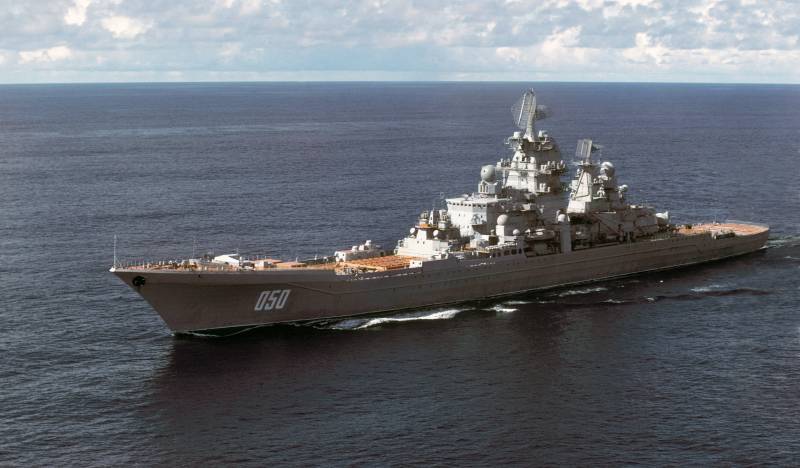
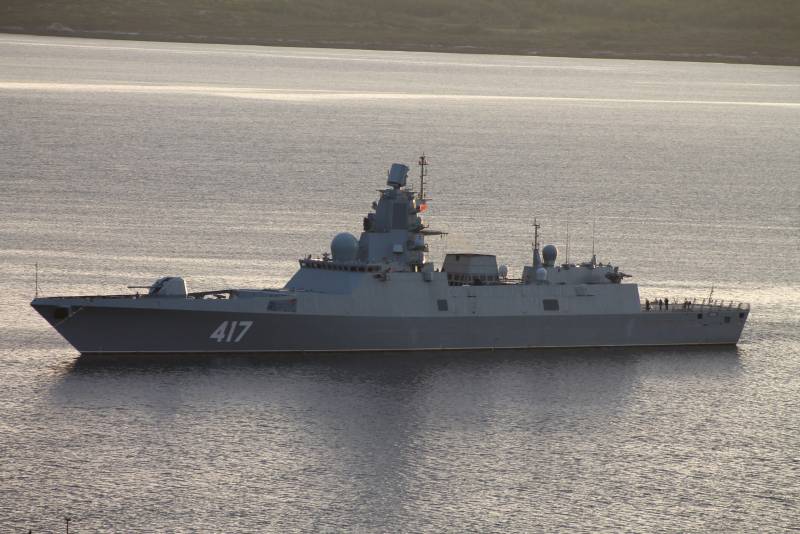
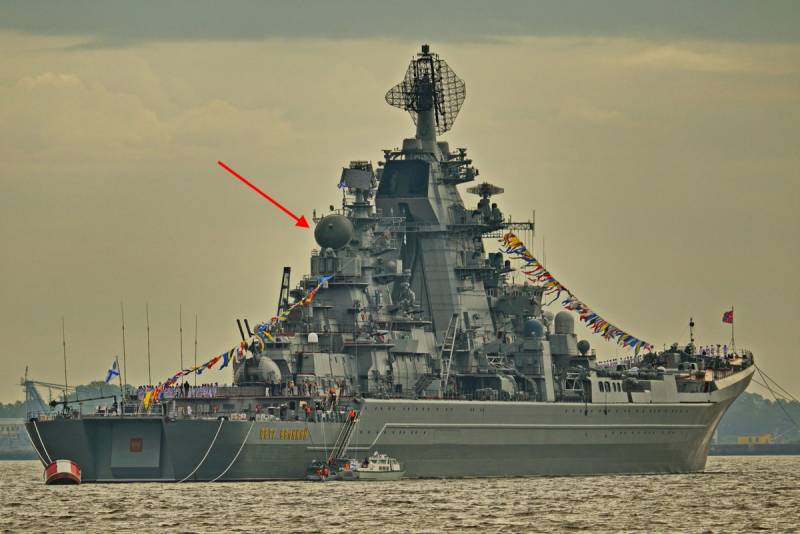
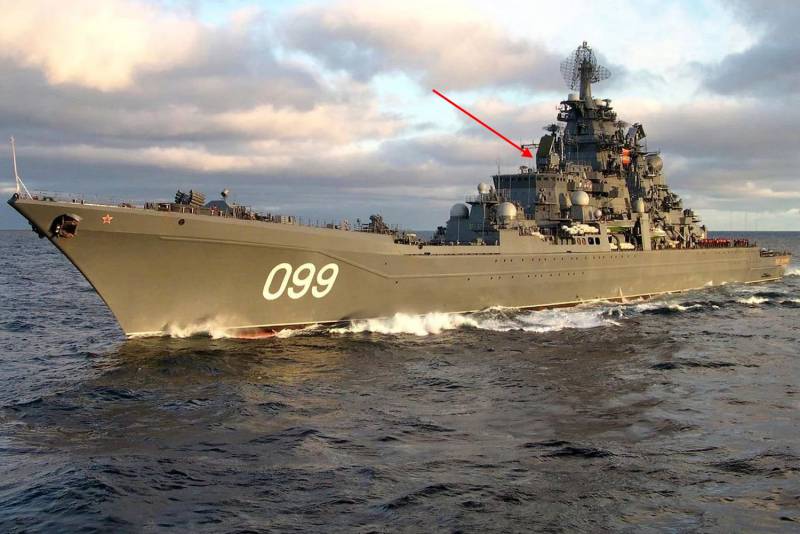
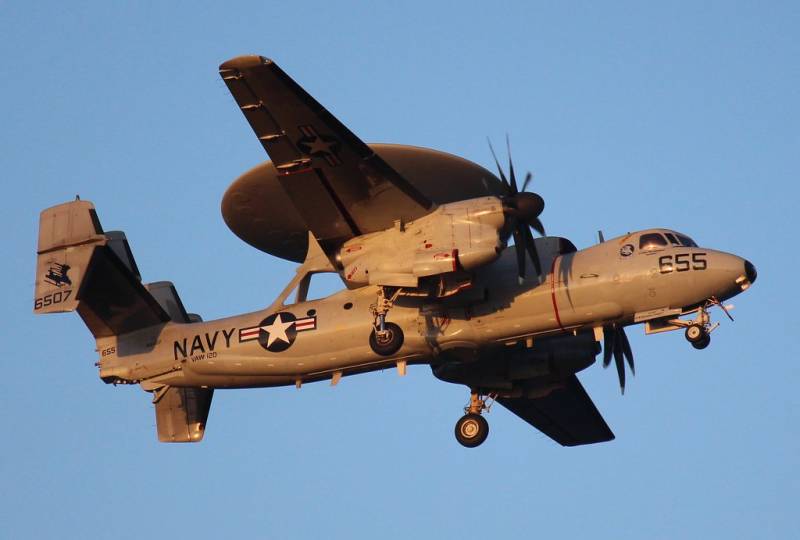

Information